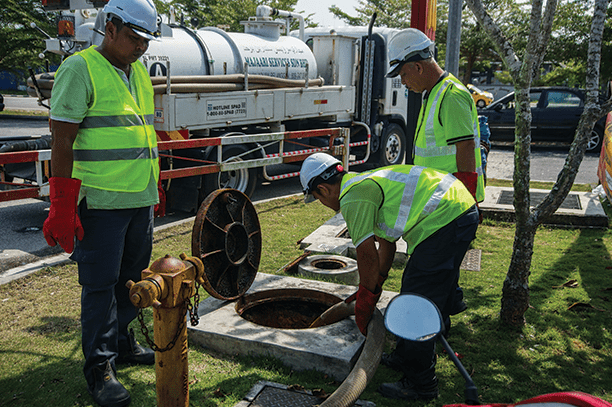What is a Lift Station?
A lift station is a pump station designed to move sewage or wastewater from lower to higher elevations using a collection system. These septic lift stations are primarily used to move wastewater from commercial and residential facilities to their final destination.
Lift station installation is essential as it is mainly used to lower the initial capital construction costs of gravity flow sewer systems. It often requires digging deeper than 10 feet below the surface to install a sewer line.
This article will briefly explain lift stations’ types, components, features, and applications. Here are a few tips in case you are considering installing lift stations for wastewater treatment.
How do Lift Stations Work?
Lift stations function as the key element of the wastewater treatment procedure. These stations operate by lifting and moving wastewater from the low elevation and moving the wastewater to the higher elevation.
Lift stations operate by lifting cleaned water through the pump vaults to maintain the movement of the wastewater throughout the cleaning procedure.
These stations’ lifting power or aid are necessary for wastewater to move through the important sanitary stages properly.
The use of lift stations throughout various settings, such as commercial or industrial ones, is often the designated method of improving cost efficiency overall. These stations aid in preventing damage to the sewage system and the septic tanks.
Lift Station Types
Lift stations usually move the sewage or wastewater from lower to higher elevation areas. They are different from the pump stations, which work with pure liquid only. Lift stations consist of a wet well, a pump, pump pipes, an alarm system, and a control system ventilation system. They can either be privately owned or municipal lift stations.
There are two types of lift stations: the dry pit and the submersible. These two differ a lot in structure but have the same type of function; to move the sewage water through pipes into the main sewer. Lift stations can be pre-made, like the pre-cast sewer pump station or an on-site one. Go through the article to know more about the types of lift stations.
1. Dry Pit Lift Station
In the dry well lift station, the valves and the pump are located separately from the wet well. This dry area is easily accessible, making it more convenient during routine repairs and maintenance.
The pump room is adjacent to the wet well, which is connected by the inlet pipe, which helps move the waste from the waste well through the well up to the discharge point.
One of the best features of the dry pit is the lift station. The pump and the valve can easily be checked, as they are located in different chambers, making them easier to maintain and repair. However, this system requires more space because of the separate dry and wet well areas.
2. Submersible Lift Station
The submersible lift station got its name from the location of the station. This kind of station does not have a separate room for the valves and pumps; rather, these parts are submerged in the wet well. This type of pump is sealed since it will be submerged under the wastewater but is regularly removed and checked for maintenance.
One of the best advantages of submersible lifts is the cost. Generally, they are cheaper to install than the dry pit lift system, requiring less space. Submersible lift stations are also designed to operate with lesser maintenance of the structure.
Lift Station Components
The lift station consists of several key mechanical components that may need to be monitored.
- Wastewater receiving well.
- Submersible pumps with piping and associated valves
- Motors
- A power supply system
- Equipment control and alarm system
- An odor control system.
Life stations may have exceptional longevity as functional assets. Steel lift stations have the typical functional life expectancy.
Advantages Of Lift Stations
Generally, a lift station costs less than the traditional gravity flow sewer system. In the gravity sewer, the line installation and excavation costs become expensive, especially in low-lying areas, because the slope must be enough to allow proper sewage flow, making it pass through pipes regardless of elevation. Lift stations also require less space for installation, which is the perfect choice for crowded areas.
It is also more efficient in maintaining the wastewater flow since they utilize sensors to kick the pump on when a certain level of sewage is reached.
In general, lift stations are a great innovation regarding proper waste management. Each type has its share of pros and cons, but both of them function for the same purpose.
Lift Station Maintenance
Sewage is an unsafe material that needs to be handled and treated carefully. Wastewater operators must know that lift station operators are keenly aware that they require routine maintenance. More than keeping the maintenance record is required; it often has legal requirements. There are so many septic tank pumping services available that you can take the help of it for incorporating wet well lift stations at your workplace or anywhere for wastewater management.
Conclusion
You can count on the American Onsite Septic pumping team if you need the septic tank pumped or any other septic system services. We specialize in septic system pumping. We also offer maintenance, septic system and lift station installation, and more. To schedule an appointment to have the septic tank pumped or if you need any other service, give us a call today.






